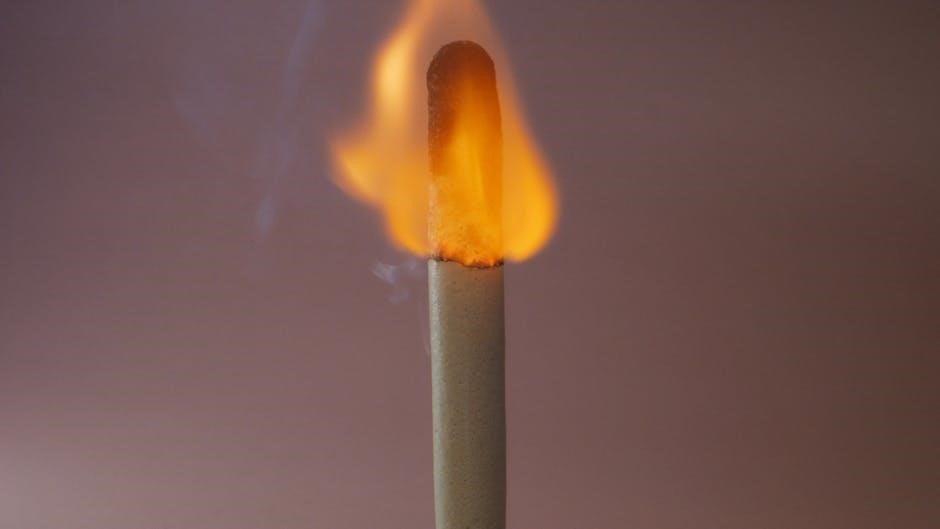Proper hot tub chemicals are vital for maintaining safe‚ clean‚ and enjoyable water. They ensure water chemistry balance‚ prevent bacterial growth‚ and protect equipment‚ creating a relaxing experience.
Why Hot Tub Chemicals Are Essential
Hot tub chemicals are crucial for maintaining clean‚ safe‚ and balanced water. Without proper chemical maintenance‚ bacteria‚ algae‚ and harmful contaminants can thrive‚ leading to cloudy water‚ skin irritation‚ and unpleasant odors. Chemicals like sanitizers‚ pH balancers‚ and shock treatments prevent these issues‚ ensuring water remains hygienic and comfortable. Regular use of these chemicals also protects the hot tub’s equipment from damage caused by imbalanced water chemistry. By keeping water fresh and clear‚ chemicals enhance the overall relaxation experience‚ making them indispensable for hot tub ownership.
Overview of Hot Tub Maintenance Basics
Hot tub maintenance involves regular testing and balancing of water chemistry‚ including pH‚ alkalinity‚ and calcium hardness. Essential tasks include adding sanitizers‚ shock treatments‚ and adjusting chemicals as needed. Proper maintenance prevents issues like cloudy water and equipment damage. Consistency is key to keeping water safe‚ clean‚ and enjoyable. Following a routine ensures optimal performance and longevity of your hot tub‚ allowing you to relax in a hygienic and inviting environment.
Understanding Water Chemistry in Hot Tubs
Water chemistry in hot tubs focuses on balancing pH‚ alkalinity‚ and calcium hardness to ensure clean‚ safe‚ and comfortable water for soaking‚ while protecting the tub’s components.
Key Parameters: pH‚ Alkalinity‚ and Calcium Hardness
Proper water chemistry hinges on balancing pH‚ alkalinity‚ and calcium hardness. pH should range between 7.2 and 7.8 to ensure sanitizer effectiveness and bather comfort. Alkalinity‚ ideally between 80-120 ppm‚ stabilizes pH levels‚ preventing drastic fluctuations. Calcium hardness‚ recommended at 175-275 ppm‚ protects equipment from corrosion and prevents scaling. These parameters are vital for maintaining clear‚ safe water and ensuring your hot tub remains in optimal condition for relaxation and longevity.
The Importance of Balancing Water Chemistry
Balancing water chemistry is crucial for a safe and enjoyable hot tub experience. Properly balanced water prevents bacterial growth‚ ensures effective sanitizer performance‚ and avoids skin irritation. It also protects the hot tub’s equipment from corrosion and scaling. Imbalanced chemistry can lead to cloudy water‚ unpleasant odors‚ and damage to the tub. Regular testing and adjustments maintain optimal conditions‚ ensuring clean‚ clear water and extending the lifespan of your hot tub. This balance is essential for both user comfort and system longevity.

Essential Hot Tub Chemicals
Sanitizers‚ pH balancers‚ alkalinity adjusters‚ and shock treatments are key chemicals. They maintain clean‚ safe water and prevent issues like cloudy water and equipment damage.
Sanitizers: Chlorine vs. Bromine
Sanitizers are crucial for maintaining clean and disinfected water. Chlorine and bromine are the most common options. Chlorine is cost-effective and fast-acting‚ making it ideal for frequent use. Bromine‚ while more expensive‚ is gentler on skin and eyes‚ reducing irritation. Both require proper dosing to ensure effectiveness and safety. Always use granular forms for better stability in hot water. Regular testing ensures optimal levels‚ preventing bacteria and algae growth while keeping the water fresh and odor-free. Proper sanitizer choice balances efficacy‚ comfort‚ and maintenance needs.
pH Balancers and Alkalinity Adjusters
Maintaining proper pH and alkalinity levels is essential for water quality. pH should range between 7.2 and 7.8‚ while alkalinity should be 80-120 ppm to stabilize pH. Imbalanced levels can cause cloudy water‚ skin irritation‚ or equipment damage. Adjusters like pH increasers or decreasers and alkalinity boosters help achieve these levels. Always test water before adjustments and add chemicals slowly to avoid over-correction. Proper balancing ensures a safe‚ comfortable soak and prevents long-term damage to your hot tub system.
Shock Treatments for Clean Water
Shock treatments are essential for oxidizing organic contaminants‚ preventing cloudy water and odors. They eliminate bacteria‚ viruses‚ and algae‚ improving water clarity and safety. Regular shocking (at least weekly) helps maintain clean water and prolongs equipment life. Non-chlorine and chlorine-based shocks are available‚ with dosage varying by hot tub size and usage; Always follow instructions for proper application and safety. Shocking ensures a fresh‚ clean soak and prevents chemical imbalances‚ keeping your hot tub water pristine and enjoyable.

Step-by-Step Guide to Adding Chemicals
Filling‚ testing‚ and balancing your hot tub’s water with the right chemicals is crucial. Start by filling the tub‚ then test and adjust pH and alkalinity levels before adding sanitizers and shock treatments for clean‚ safe water.
Filling and Testing the Water
Filling your hot tub with fresh water is the first step in maintaining clean and safe conditions. Ensure the water level meets the manufacturer’s recommendations. Once filled‚ use test strips or a liquid test kit to measure key parameters like pH‚ alkalinity‚ and calcium hardness. Accurate testing ensures proper chemical balance. Allow the water to circulate for a few hours before re-testing to get reliable readings. Regular testing prevents issues like cloudy water or equipment damage. Always test before adding any chemicals to avoid imbalances. This step sets the foundation for effective water care and maintenance.
Adjusting pH and Alkalinity Levels
Properly adjusting pH and alkalinity levels is crucial for maintaining safe and effective hot tub water. Alkalinity should be between 80-120 ppm to stabilize pH levels. The ideal pH range is 7.2-7.8. Low pH can cause eye irritation and equipment corrosion‚ while high pH may lead to cloudy water and poor sanitizer efficiency. Use test strips to measure levels and adjust accordingly. Add chemicals slowly‚ allowing the water to circulate before re-testing. Balanced levels ensure optimal sanitizer performance and prevent issues like skin irritation or mineral buildup. Regular adjustments are key to maintaining clean‚ enjoyable water.
Introducing Sanitizers and Shock Treatments
Sanitizers‚ such as chlorine or bromine‚ are essential for disinfecting hot tub water and maintaining hygiene. They eliminate bacteria and viruses‚ ensuring safe use. Shock treatments‚ like non-chlorine or chlorine-based options‚ remove organic contaminants‚ preventing cloudy water and odors. Apply sanitizers according to usage and test results‚ and shock treat weekly or after heavy use. Always follow dosage instructions and allow chemicals to dissolve fully before entering the water. Proper use of sanitizers and shocks ensures clean‚ clear‚ and safe water for a relaxing soak.

Hot Tub Chemical Safety Tips
Handle chemicals safely by wearing gloves and goggles. Never mix chlorine and bromine‚ as they react dangerously. Always add chemicals to water‚ not the reverse. Store them in a cool‚ dry place‚ away from sunlight and moisture‚ and ensure they dissolve fully before use. Follow all instructions carefully to maintain a safe environment for relaxation.
Handling Chemicals Safely
Always wear gloves and goggles when handling hot tub chemicals to protect yourself from potential irritation. Avoid mixing chlorine and bromine‚ as they can react dangerously. Add chemicals directly to water‚ never the reverse‚ to prevent violent reactions. Ensure chemicals dissolve fully before use to maintain water safety. Store them in a cool‚ dry place‚ away from sunlight and moisture. Follow all manufacturer instructions carefully and keep chemicals out of reach of children and pets. Proper handling ensures a safe and enjoyable hot tub experience for everyone.
Storage and Disposal Guidelines
Store hot tub chemicals in a cool‚ dry‚ well-ventilated area away from direct sunlight and moisture. Keep them separate from household cleaners and out of reach of children and pets. Always use the original containers with tightly sealed lids to prevent accidental spills. Dispose of unused or expired chemicals according to local regulations and manufacturer instructions. Never pour chemicals down drains or mix with other waste‚ as this can harm the environment. Proper storage and disposal ensure safety and environmental responsibility while maintaining your hot tub.

Testing and Maintaining Water Quality
Regularly test your hot tub water using strips or kits to monitor pH‚ alkalinity‚ and sanitizer levels. Adjust chemicals as needed to ensure safe and clean water for optimal relaxation.
Using Test Strips and Kits
Test strips and kits are essential tools for monitoring hot tub water quality. Dip test strips into the water to measure pH‚ alkalinity‚ and sanitizer levels instantly. For precise readings‚ use liquid test kits‚ which involve adding drops to water samples. Always follow the manufacturer’s instructions to ensure accurate results. Regular testing helps maintain balanced water chemistry‚ preventing issues like cloudy water‚ skin irritation‚ and equipment damage. Consistent use of these tools ensures a safe and enjoyable soaking experience year-round.
Regular Maintenance Schedule
A regular maintenance schedule is crucial for optimal hot tub performance. Test water chemistry weekly‚ including pH‚ alkalinity‚ and sanitizer levels. Shock the water at least once a week to eliminate contaminants. Clean filters every 1-2 weeks and replace them every 1-2 years. Drain and refill the tub every 3-4 months to remove built-up impurities. Monthly‚ inspect and clean the tub surfaces and plumbing. By following this routine‚ you ensure clean‚ safe water and extend the lifespan of your hot tub and its components.

Troubleshooting Common Issues
Cloudy water‚ foam‚ and odors often result from imbalanced chemistry or poor sanitation. Regular testing and adjusting pH‚ alkalinity‚ and sanitizer levels can prevent these issues. Shock treatments and deep cleaning also help eliminate contaminants and maintain clarity. Addressing these problems promptly ensures safe and enjoyable hot tub experiences.
Cloudy Water and Foam Prevention
Cloudy water and foam in hot tubs often result from imbalanced pH‚ low sanitizer levels‚ or excessive contaminants. Regular shock treatments help break down organic matter‚ preventing cloudiness. Maintaining proper pH and alkalinity levels ensures water clarity. Using defoamers can address foam issues caused by detergent residues or body oils. Testing water chemistry frequently and adjusting sanitizer levels promptly prevents these problems. Regular maintenance‚ including deep cleaning and filter replacement‚ also helps keep water clear and foam-free‚ ensuring a clean and enjoyable soaking experience.
Addressing Skin Irritation and Odors
Skin irritation and unpleasant odors in hot tubs often stem from improper pH levels‚ low sanitizer concentrations‚ or high levels of combined chlorine. To resolve these issues‚ ensure pH and alkalinity levels are within the recommended range. Shock treatments can eliminate embedded contaminants causing odors. Regularly test and adjust sanitizer levels to maintain effective disinfection without overuse. Wearing clean swimwear and showering before use can also reduce irritants. Addressing these factors promptly helps prevent discomfort and keeps the water fresh and safe for enjoyable soaking experiences.

Alternative Water Care Systems
Explore non-traditional water care options like biguanides and saltwater systems for unique benefits‚ offering alternatives to chlorine and bromine for cleaner‚ gentler‚ and odor-free hot tub experiences.
Biguanides: A Non-Chlorine Option
Biguanides are a popular non-chlorine sanitizer for hot tubs‚ offering a gentle alternative to traditional chemicals. They effectively inhibit bacterial growth without harsh odors or skin irritation‚ making them ideal for sensitive users. Unlike chlorine or bromine‚ biguanides don’t produce harmful byproducts‚ ensuring a safer soak. Regular maintenance is crucial‚ as they require consistent monitoring to maintain effectiveness. This system is praised for its ability to keep water fresh and clear while providing a more natural hot tub experience.
Saltwater Systems: Pros and Cons
Saltwater systems offer a unique approach to hot tub care by generating chlorine or bromine from salt‚ reducing manual chemical addition. They appeal to users seeking lower maintenance and softer water. However‚ these systems require monthly salinity testing and can be corrosive to equipment. While they simplify water care for some‚ others find balancing water chemistry more challenging. Despite their benefits‚ saltwater systems may not be ideal for all users due to their complex setup and potential drawbacks.

Draining and Refilling Your Hot Tub
Draining and refilling your hot tub every 3 months is essential to flush out contaminants and freshen the water‚ ensuring optimal hygiene and equipment longevity.
When to Drain the Hot Tub
Drain your hot tub every 3 months to remove accumulated contaminants and refresh the water. Heavy use‚ visible debris‚ or persistent chemical imbalances also signal it’s time to drain. Always clean the plumbing with a line flush or pipe cleaner during this process to ensure optimal water quality and system performance. Regular draining prevents bacterial growth and maintains a clean‚ safe environment for relaxation. Consider deep cleaning the surfaces to remove stains and corrosion‚ ensuring your hot tub remains in great condition for years to come.
Deep Cleaning and Plumbing Maintenance
Deep cleaning and plumbing maintenance are essential for maintaining your hot tub’s longevity. After draining‚ use a pipe cleaner to flush out built-up debris and organic matter from the plumbing system. This prevents clogs and bacterial growth. Clean the surfaces to remove stains and corrosion‚ ensuring all areas are free from contaminants. Regular maintenance helps preserve the hot tub’s components and ensures clean water circulation. Perform these tasks every 3 months or as needed to keep your hot tub in optimal condition and ready for use.
Regular maintenance and proper chemical use ensure a safe‚ enjoyable hot tub experience. Follow guidelines‚ test water regularly‚ and sanitize to maximize your hot tub’s lifespan and relaxation.
Maximizing Hot Tub Lifespan
Regular maintenance and proper chemical use are key to extending your hot tub’s lifespan. Balanced water chemistry prevents corrosion and damage to equipment. Routine cleaning and filtration ensure optimal performance. Shock treatments and sanitizers maintain water clarity and safety. Draining and refilling every 3-4 months removes built-up contaminants. Proper storage of chemicals avoids degradation‚ while regular inspections prevent wear and tear. By following these best practices‚ you protect your investment and ensure years of relaxation and enjoyment in your hot tub.
Enjoying a Safe and Relaxing Soak
A well-maintained hot tub offers a serene escape‚ promoting relaxation and rejuvenation. Proper chemical balance ensures water is gentle on skin‚ reducing irritation risks. By following safety guidelines‚ such as wearing goggles and gloves when handling chemicals‚ you protect yourself and others. Regular testing and adjustments create a hygienic environment‚ allowing you to unwind without worries. A clean‚ balanced hot tub enhances your soaking experience‚ providing countless moments of tranquility and comfort.

